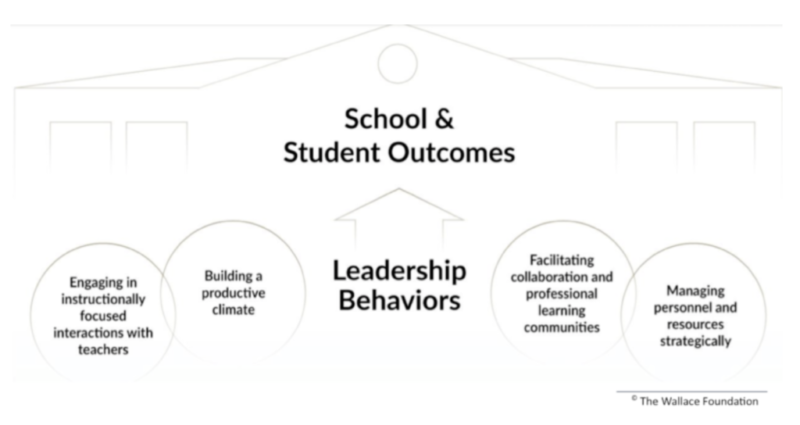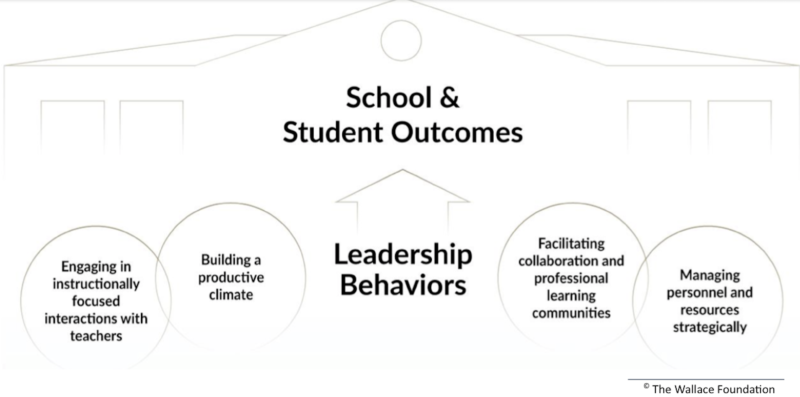Support your colleagues – act (also remotely) as a solution-focused coach
In our opinion, solution-focused coaching is a very effective coaching approach. The essence of solution-focused coaching is that you focus on a desired situation (rather than on a problem), on successes already achieved (rather than on failures and mistakes), on competencies and possibilities (rather than on weaknesses and limitations), on successes (rather than on analyses of the problem), on step by step (rather than on the big leap).
Some people see problems and ask why. I dream dreams and ask why not. – Robert R. Kennedy
Many schools find solution-focused coaching to be a very refreshing approach. Especially because solution-focused coaching refrains from time consuming problem analysis and the search for cause or blame. Instead, you examine what has helped in previous situations and what might help in the future in order to move forward. This shift from a focus on problems to a focus on solutions makes Solution-Focused Coaching a positive method for bringing about change in individuals, but also in whole school teams.
Coach: “When have you ever been able to successfully give feedback to colleagues about behaviour you find offensive? What contributed to that feedback being successful?”
Principles of Solution-focused Coaching
A solution-focused coach always keeps the following principles in mind.
- Do more of what works well or better. Believe it or not: simply do more of what works and notice that this focus releases creativity to work on improvement.
- No problem occurs twenty-four hours a day. We look for the exceptions: when does the problem not occur or occur less? And what did we do differently in those situations?
- People are competent. People appear to have resources and qualities to solve their problems. Just look at your past, how you dealt with problems before. Or look at how you stood firm in very difficult situations.
- Focus on the future. Continuing talking about what went wrong in the past is hoping for a better past. It often works better to focus on the future: suppose you no longer have this problem, what will be different?
- Step by step. Small steps start a positive movement towards the solution.
- Give recognition. Not focusing on the problems does not mean that you do not recognise them. On the contrary. The solution-focused approach embraces problems or complaints as the starting point for change. By acknowledging what bothers people you find out what is going well and what is not, and what needs to change. Realising that all complaints and problems carry the seed of a possible solution. School leader: “I find my employees so lacking in entrepreneurship”. Coach: “So you want to find ways to activate them?”
Solution-focused coaching in five steps
Roughly speaking, solution-focused coaching can be divided into five steps:
- Clarifying the need for change
- Definition of success
- Name positive exceptions
- Step forward
- Monitor progress
You can do these steps in a physical one-to-one contact, in a remote online one-to-one contact and with a group (from a small working group to the whole school team).
Step 1. Clarifying the need for change
In this step, you examine the expectations surrounding the coaching, for example by asking: “What would be a good outcome of the coaching?” In doing so, you provide a direct line to a desired future. Without wanting to hear anything about ‘the problem’, because people also want to be able to talk about their complaints and problems. It is important to have an ear for that. At the same time, as a coach your main task here is to map out the desired situation.
You do this by asking questions such as:
- What would you like instead of the problem?
- What will be different if the problem is solved?
Step 2. Success definition
A well-known question in solution-focused work is the miracle question. With the miracle question you invite teachers or other people involved to think about alternatives without limitation. You shift the focus from a life with a problem to a life in which the problem is solved. The miracle question is strongly future-oriented and challenges positive thinking and creativity.
“I want to ask you a strange question… suppose, while you are sleeping tonight, a miracle happens. The miracle is that the problem you describe is solved. But you don’t know that the miracle took place because you were asleep. What will be different when you wake up tomorrow? How can you know for sure that a miracle has happened and that your problem is solved?
This miracle question has many variants. For example: “Suppose this coaching is a success, what will be different from now?”; or “Suppose we walk through the school in two months’ time and things go the way you would like them to go, what do we see then?”.
The miracle question may well be regarded as an opening gambit to shift the perspective from the problem to a solution. For many people – not least those in education – this takes some time getting used to. The question is usually experienced as challenging. At the same time, you see people brighten up when describing a desired future. After the miracle question, you can ask what the coachees see themselves doing in the desired future. In this way, clear definitions of success emerge, which can be used for the further coaching process. “What will you do differently if your problem is solved?” Successes that the coachees comes up with themselves, preferably in terms of behaviour, offer the greatest chance for success.
For example: “my teachers are less passive” is a nice success but does not indicate anything about the own changed behaviour. Moreover, it is negatively formulated. More interesting and challenging is what should replace passivity. The objective “my teachers think proactively with me and I know how to challenge them to come up with ideas” is formulated positively and in terms of behaviour.
Step 3. Identify positive exceptions
The positive exception to the problem often holds the key to the solution. In solution-focused coaching you assume that a problem never occurs 24 hours a day. There are always exceptions to the problem. Information about exceptions, previously created by the coachee, helps to develop strategies to solve current problems. The exceptions refer to competences and possibilities.
Questions about exceptions include:
- Have there been times, for example in the last few weeks, when you did not let the student undermine your authority? What did you do then?
- If I were to ask colleagues if there were times when you did better, what would they say? What did you do differently?
- How do you get things to improve in the relationship with your fellow teacher?
A typical question from solution-focused work is the scaling question. The scale question helps to further identify exceptions and gives estimates of future possibilities. The scaling question uses observations, impressions and predictions of the coachee on a scale of 0 to 10. It refers to specific moments in time such as now, yesterday, when this happened, and so on.
For example: “I’ll ask you another question now, one that puts things on a scale from 0 to 10. Let’s say that 0 is the situation that is stressing you very much now and 10 is the miracle you described to me earlier. Where on this scale are you now?” To the number that is then mentioned, for example a 4, you as a coach are going to respond positively. In a 4 (but also in a 1, 2, 3) there are exceptions hidden. You can continue to ask what is different about a 4 as opposed to a 0. By asking about the behaviour in these exceptions (how did you achieve this, what did you do then, how did you manage it), strengths and competencies are revealed (for example, the person in question can answer: “by remaining calm, by concentrating well”).
Tip: examine the positive exceptions at three levelsIntrapersonal level Interpersonal level Organisational level
|
Step 4. Step forward
Assume that taking small steps is a strong strategy. In education, the practice of working with small steps is basically very well known. For the majority of professionals in education applies Vygotiski’s research on the ‘Zone of Proximal Development’: the theory that it is best to link learning content to already acquired knowledge and competences. It is then remarkable to find that when a certain individual or collective change is needed in a school, management and teachers often experience the small steps as insufficient.
Small steps, however, have unique advantages over fast, (too) big changes. Small steps are easy to take and therefore require little energy. Moreover, they are inviting. A small step does not entail major risks and the effect can be easily measured.
Inviting to formulate a next step often follows very logically from a scale question. “What else can you do to make a small step forward on the scale (half a point or a whole point)? What, of what is already going well, could you do again tomorrow? What could you do to make it a 4.5?
It is important to focus on observable concrete actions. This is very important if you want your coaching to lead to effects in the job practice of the person being coached.
Once the person being coached has committed to taking a first step and taking the corresponding actions, it is your task as coach to relate the agreed actions to the stated definition of success. Together with the person being coached, you then investigate how the actions bring the desired situation closer.
Step 5. Monitoring progress
In one or more follow-up conversations, you ask the person being coached mainly solution-focused questions that help the person look at his/her actions in relation to the realisation of the desired future. Useful questions include:
- What is already going better?
- Where do you stand now on the scale?
- How did you achieve this improvement?
The attitude of the solution-focused coach
In addition to the five-step structure, the attitude you adopt as a coach is at least as essential. This is reflected in the way you interact with the coached teacher(s).
The coaching attitude includes the following characteristics:
- suspension of one’s judgment;
- being attentive and keenly observing;
- empathically putting yourself in the shoes of the person being coached;
- communicating respectfully by acknowledging the experiences and opinions of the person being coached;
- balancing between steering and giving space for self-steering.
Suspension of one’s own judgment
When we interact, it is always from our own frames of reference, knowledge, opinions, values and norms. This is quite normal and happens automatically. However, the professionalism of the coach requires that you try to suspend this natural process and put your own thinking and judgements somewhat in the background.
Nothing in itself is good or bad. Only thinking makes it so. – Hamlet (William Shakespeare)
Being attentive and observant
A coach should observe virtually all verbal and non-verbal behaviour of the coached teacher, principal, or group of teachers. This attention, call it alertness, helps the coach to assess whether an intervention is appropriate or not, whether an intervention “arrives”, whether the coaching is going too fast or too slow, and so on.
Empathically putting oneself in the shoes of the coachee
Empathy means putting yourself in the shoes of others. The “displacement technique” helps us do this. Putting yourself in the shoes of the person being coached means that you consciously ask yourself how you would think and feel in the shoes of the person being coached in his or her situation at this school.
Communicating respectfully by acknowledging the coachee’s experiences and opinions
Respect is an expensive word that becomes tangible in the practice of communicative recognition. When a coach acknowledges the coachee communicatively, the coachee feels that he or she has the right to think what he or she thinks and to feel what he or she feels. Recognition, for example of a teacher, starts with listening carefully to what the teacher says. To make it clear that you are listening carefully, you can give feedback on what you have heard the teacher say (or told between the lines) about his or her needs, views, expectations and so on.
Balancing between management and giving space for self-management
As a coach, you always position yourself on the continuum with, at one end, full self-management by the coachee and, at the other end, management by you as a coach. Awareness of where you are on the continuum is important and grows as you gain experience in coaching. As a coach, do you only ask questions or do you also give answers? Who comes up with the assignments between coaching sessions? Who decides if it has been enough for today? Who takes the initiative for the follow-up of the previous session? …
All questions that can be answered one way or the other. Leaving everything up to the person being coached would be an example of self-management, but then coaching would be superfluous. And if the coach were to assume all responsibility for the proper course of events, the coach would be ignoring the requirement of ‘primarily self-managed development’ from the definition of coaching.
There comes a time when a teacher no longer leads his students, but follows them. He no longer shows them the way because they have a compass within themselves. He does not have good advice for them because they listen to their own hearts. He knows that his lessons and guidelines have led nowhere except to each person’s own ability to see the position of the stars and read the signs along the way. He knows that he is a landmark along the way: once the traveller has passed, they do not turn back to him. He now stands still and thinks about whether he will find his own trail again.
– Nand Cuvelier (1976): City of Axen
Asking questions as a core competence of the coach
As a coaching school leader, fellow teacher or school counsellor, you leave the ownership of the learning process with the coachee by primarily working with questions.
An answer is always a piece of the road behind us. Only a question can take us further.
– Jostein Gaardner (1997): Hello, is anyone there?
Through questions, you invite the coachee(s) to question, broaden and/or deepen their own perceptions, thinking, feeling and acting. Questions are also a very powerful tool in the development of new and future-oriented meanings.
It is not always easy to consciously ask the right question at the right time in various educational contexts. Possibly, the solution-focused questions can already serve as a first inspiration.
A ‘did you know?’ to conclude
There is a good chance that you, as a school counsellor, principal or teacher, think that the term coaching was adopted from the sports world. Almost everyone shares this assumption. Yet it is wrong. The term ‘coach’ was already included with an explicit educational meaning in the famous Webster’s Directionary in 1848. In those days, a ‘coach’ was the person who guided university students to achieve good exam results. It was not until the end of the 19th century that the term was adopted in the world of sports. Even more interesting is the relationship between the meaning of coach as companion and the meaning of coach as bus or coach. Etymological research shows that the word coach is a derivation of the Hungarian ‘Kocsi’. In the early 16th century, this was the name of a place between Vienna and Budapest where the Hungarian emperor and his court changed vehicles. Tradition has it that the carriages made in Kocksi (in Hungarian: Kocsi szekér) differed greatly from their predecessors in terms of comfort. So comfortable, in fact, that in time the Kocksi carriages became known throughout Europe. The users later dropped the term (szekér). Only the place name (Kocsi) remained as an indication of the vehicle. Later on, the name was transformed into the native language: ‘coach’ in English, ‘coche’ in French, ‘Kutsche’ in German and, under the Habsburg influence, ‘koets’ in Dutch. The move at the beginning of the 19th century towards coach as the term for the supervisor of students is called a metaphorical leap in etymology. A coach ensures that those coached in education and beyond get where they want to go, just like travellers in a coach.




